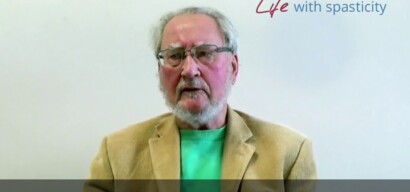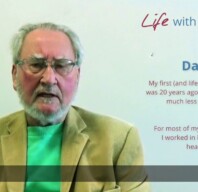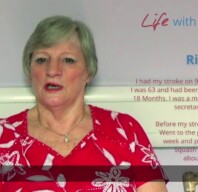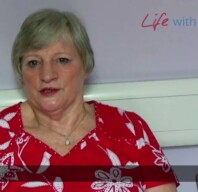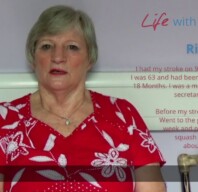Spasticity after stroke

What causes post stroke spasticity?
After a stroke, it is quite common for people to be left with muscle weakness and stiffness. It can feel as though the muscles are pulling and tight and can contract involuntarily. This is called post-stroke spasticity.
While there are no cures for post-stroke spasticity, this condition does not progressively worsen. In fact, it can be treated with a tailored rehabilitation program, which can help the often frustrating and painful symptoms improve over time.
Understanding stroke
Stroke happens when the blood supply to the brain is blocked, either by a blood clot (ischemic stroke) or burst blood vessel (hemorrhagic stroke). Starved of oxygen, brain cells die, leading to a range of symptoms depending on where in the brain the stroke has occurred. The resulting brain damage can leave stroke survivors with lasting impacts such as speech problems and impaired mobility, as well as impacts on cognition and mental health.
The quicker a stroke is detected and treated, the quicker blood flow can be restored to the brain – thereby reducing damage to the brain. Emergency treatment in hospital can remove or dissolve blood clots in the brain, while specialist acute stroke care can improve outcomes and help prevent a second stroke. Early rehabilitation in hospital, such as physical therapy and speech and language therapy, can help stroke survivors recover skills and functions that may have been impacted. This type of support is vital in the weeks and months following a stroke.
1 in 4
adults
over the age of 25 will have a stroke in their lifetime1
110M
people
in the world have experienced stroke1
87%
of strokes
are ischemic strokes2
45%
of stroke survivors
can expect to develop spasticity within 3 months3

Effects of stroke
Stroke can lead to psychological, physical, cognitive, and communication problems, including:
- Neurological deficits – tingling, numbness, a drooping mouth, or facial paralysis
- Cognitive issues – difficulties with concentration, memory loss, hearing, spatial awareness, and comprehension
- Fatigue
- Impaired speech (aphasia)
- Vision problems
- Mental health challenges – anxiety and depression
- Lack of body control – muscle weakness, tightness, or spasms
Stroke and spasticity
Upper Motor Neuron Syndrome
When someone has a stroke, the part of the brain that controls voluntary movement can be damaged. This is known as Upper Motor Neuron Syndrome. On the one hand, this damage can be described by what is lost: motor skills, strength, or motor control, for example. On the other hand, it can be characterized by continuous and unwanted muscle activity – uncontrollable movements, spasms, or involuntary muscle contractions.
Measuring spasticity
The impact of spasticity can be measured using the Ashworth Scale, which is used to:
- Assess resistance to passive stretching
- Measure muscle tone using a five-point scale (six in the modified version)
- Assess the impact on a person’s ability to move around and their independence
- Differentiate between mild and severe spasticity
Recognizing spasticity after stroke
While spasticity after stroke can go unnoticed, it´s important to recognize the signs and symptoms to be able to manage and treat the condition effectively.
Is it spasticity?
Post-stroke spasticity can be difficult to recognize among other symptoms and can be overlooked in early or mild stages. Spasticity looks and feels different for everyone, but there are some common symptoms to watch out for.
Signs to look for
- Muscles that feel stiff, tight, rigid, numb, heavy, or paralyzed
Making them resistant to movement or difficult to bend or straighten through a full range of motion - Muscle weakness or paralysis
Affecting one side of the body (known as hemiparesis) - Muscles remaining “frozen” or “locked” in certain positions
Such as an elbow bent against the chest, a clenched fist, or pointed toes - Spasms
Involuntary jerking or kicking movements, or uncontrolled bouncing, tremors, twitches, or shakes - Movement difficulties
Makting it difficult to walk, balance or stand up straight - A lack of body control that makes it hard to complete daily tasks
Such as getting dressed, cooking, and cleaning

Treatment and rehabilitation exercises for post-stroke spasticity
Detailed clinical and neurological assessments by stroke specialist rehabilitation teams can help to determine a personalized treatment plan. Goals can include everything from relieving pain and improving mobility to resuming everyday activities or gaining more independence.
Treatment can include physical, occupational, and speech therapies (many stroke survivors report that they continue to see improvement even after many months of therapy). Mobility aids, assistive technologies (orthoses), and medical interventions such as botulinum neurotoxin can also help to reduce spasticity symptoms. At-home exercises are also important to improve mobility and reduce acute muscle tightness.
References
1. GBD 2016 Lifetime Risk of Stroke Collaborators, Feigin VL, Nguyen G, et al. Global, Regional, and Country-Specific Lifetime Risks of Stroke, 1990 and 2016. N Engl J Med. 2018;379(25):2429-2437.
2. Virani, SS, et al. Heart Disease and Stroke Statistics-2021 Update: A Report From the American Heart Association. Circulation. 2021; 143(8), e254–e743.
3. Schinwelski MJ, Sitek EJ, Wąż P, Sławek JW. Prevalence and predictors of post-stroke spasticity and its impact on daily living and quality of life. Neurol Neurochir Pol. 2019; 53(6):449-57.

